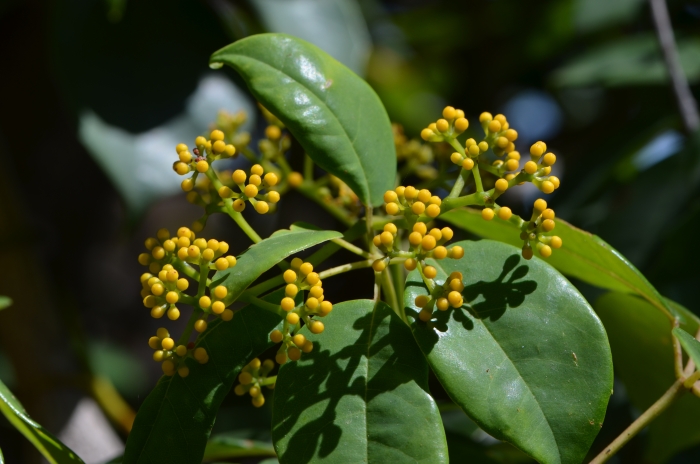Water Vine
(Cissus hypoglauca)
Water Vine (Cissus hypoglauca)
/
/

Margaret Donald from Sydney, Australia
CC BY-SA 2.0
Image By:
Margaret Donald from Sydney, Australia
Recorded By:
Copyright:
CC BY-SA 2.0
Copyright Notice:
Photo by: Margaret Donald from Sydney, Australia | License Type: CC BY-SA 2.0 | License URL: https://creativecommons.org/licenses/by-sa/2.0 | Uploader: MargaretRDonald | Publisher: Wikimedia Commons | Title: Cissus_hypoglauca_DSC_4008_(23258429830).jpg | Notes: Transferred from Flickr via #flickr2commons |





















Estimated Native Range
Summary
Cissus hypoglauca, commonly known as Water Vine, Giant Water Vine, or Jungle Grape, is a vigorous evergreen vine native to the rainforests and moist, shaded areas of eastern Australia. It is a member of the grape family and can grow quite large, with mature vines developing woody stems. This species typically climbs up trees and other structures using tendrils, reaching for sunlight in its dense, native habitat. The vine’s foliage is lush, with leaves that are often five-lobed and a deep green color.
Cissus hypoglauca is appreciated for its ability to create a dense canopy, making it an excellent choice for creating natural shade in gardens. It flowers with small, inconspicuous yellow blooms that appear in terminal umbels, mostly during spring and summer. The flowers are followed by striking blue berries that are edible but have an acrid aftertaste. These berries are a source of food for birds and small animals. In cultivation, it is used for covering pergolas, trellises, and fences, and is also suitable for indoor use as a houseplant. Water Vine requires consistently moist soil and thrives in part to full shade, avoiding direct sunlight. It is relatively low-maintenance but should be monitored for scale insects and mealybugs, which can sometimes infest the plant.CC BY-SA 4.0
Cissus hypoglauca is appreciated for its ability to create a dense canopy, making it an excellent choice for creating natural shade in gardens. It flowers with small, inconspicuous yellow blooms that appear in terminal umbels, mostly during spring and summer. The flowers are followed by striking blue berries that are edible but have an acrid aftertaste. These berries are a source of food for birds and small animals. In cultivation, it is used for covering pergolas, trellises, and fences, and is also suitable for indoor use as a houseplant. Water Vine requires consistently moist soil and thrives in part to full shade, avoiding direct sunlight. It is relatively low-maintenance but should be monitored for scale insects and mealybugs, which can sometimes infest the plant.CC BY-SA 4.0
Plant Description
- Plant Type: Vine
- Height: 6-15 feet
- Width: 2-7 feet
- Growth Rate: Moderate
- Flower Color: Yellow
- Flowering Season: Spring
- Leaf Retention: Evergreen
Growth Requirements
- Sun: Part Shade, Full Shade
- Water: Medium, High
- Drainage: Slow, Medium
Common Uses
Low Maintenance, Potted Plant, Rock Garden
Natural Habitat
Native to the rainforests and moist, shaded areas of eastern Australia
Other Names
Common Names: Water Vine, Giant Water Vine, Five-Leaf Water Vine, Jungle Vine, Native Grapes, Billangai
Scientific Names: , Cissus hypoglauca, Nothocissus hypoglauca, Vitis hypoglauca, Cissus australasica,
GBIF Accepted Name: Nothocissus hypoglauca (A.Gray) Latiff